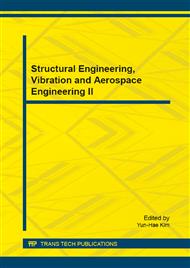p.53
p.57
p.63
p.68
p.74
p.79
p.84
p.88
p.93
Numerical Assessment on Edgewise Compressive Strength of Heavy Sandwich Fiberboard
Abstract:
The application status of heavy duty corrugated paperboard and honeycomb fiberboard were reviewed. In order to contrast the edgewise compressive strength of the two typical sandwich fiberboards, the finite element models of honeycomb fiberboard and AAB flute corrugated fiberboard with large sample size were established. By numerical simulation method, the effect of structure on the edgewise compressive strength were decoupled from the factor such as the materials, material consumption, sample size and shape, processing technology and environmental conditions etc. Under the same material, material consumption and sample size, bulking analysis based on numerical method was carried out. The results show that the edgewise compressive strength of both sides of the honeycomb fiberboard is about 50% higher than that of AAB flute corrugated fiberboard, and honeycomb fiberboard is similar to bi-isotropic material. The conclusions obtained are valuable to reasonable choice of the honeycomb fiberboard and heavy duty corrugated fiberboard and correct understanding the mechanical properties of the two sandwich fiberboard.
Info:
Periodical:
Pages:
74-78
Citation:
Online since:
January 2015
Authors:
Price:
Сopyright:
© 2015 Trans Tech Publications Ltd. All Rights Reserved
Share:
Citation:


